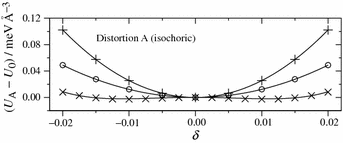
Solid State Theory Walter A Harrison Pdf
Introduction to Solid-state Device Theory Chapter 2 - Solid-state Device Theory This chapter will cover the physics behind the operation of semiconductor devices and show how these principles are applied in several different types of semiconductor devices. Walter Harrison is Professor of Applied Physics at Stanford University. States of the electrons, and most of the properties of the metals should be.
Learning Solid State Physics involves a certain degree of maturity, since it involves tying together diverse concepts from many areas of physics. The objective is to understand, in a basic way, how solid materials behave. To do this one needs both a good physical and mathematical background. Gericom webgine xl drivers. One definition of Solid State Physics is it is the study of the physical (e.g. The electrical, dielectric, magnetic, elastic, and thermal) properties of solids in terms of basic physical laws. In one sense, Solid State Physics is more like chemistry than some other branches of physics because it focuses on common properties of large classes of materials.
It is typical that Solid State Physics emphasizes how physics properties link to electronic structure. We have retained the term Solid Modern solid state physics came of age in the late thirties and forties and is now is part of condensed matter physics which includes liquids, soft materials, and non-crystalline solids. This solid state/condensed matter physics book begins with three broad areas: (1) How and why atoms bind together to form solids, (2) Lattice vibrations and phonons, and (3) Electrons in solids. It then applies these areas to (4) Interactions especially of electrons with phonons, (5) Metals, the Fermi surface and alloys, (6) Semiconductors, (7) Magnetism, (8) Superconductivity, (9) Dielectrics and ferroelectrics, (10) Optical properties, (11) Defects, and (12) Certain other modern topics such as layered materials, quantum Hall effect, mesoscopics, nanophysics, and soft condensed matter. For this 2 nd addition new material has been added on the evolution of BEC to BCS phenomena, conducting polymers, graphene, highly correlated electrons, iron pnictide superconductors, light emitting diodes, N-V centers, nanomagnetism, negative index of refraction, optical lattices, phase transitions, phononics, photonics, plasmonics, quantum computing, solar cells, spin Hall effect, and spintronics. The major addition to this 2nd edition is an extensive solutions manual, in which all the text problems are discussed. The problems in our book cover a wide range of difficulty.

The solutions in this manual are expected to show what we expect to get out of the problems. In the manual, we have also included a brief summary of solid state physics which should help you get focused on problem solving.
We have also included 'folk theorems' to remind about the essence of the physics without the mathematics.
Free mp3 download celine dion ft ne yo incredible. 'A well-written text.. Should find a wide readership, especially among graduate students.' Pankove, RCA. The field of solid state theory, including crystallography, semi-conductor physics, and various applications in chemistry and electrical engineering, is highly relevant to many areas of modern science and industry. Professor Harrison's well-known text offers an excellent one-year graduate course in this active and important area of research. While presenting a broad overview of the fundamental concepts and methods of solid state physics, including the basic quantum theory of solids, it surpasses more theoretical treatments in its practical coverage of physical applications.
This feature makes the book especially useful to specialists in other fields who many encounter solid state problems in their own work. At least one year of quantum mechanics is required; however, the author introduces more advanced methods as needed. Because virtually all of the properties of solids are determined by the valence electrons, the author devotes the first third of the book to electron states, including solid types and symmetry, band structure, electron dynamics, the self-consistent-field approximation, energy-band calculations, semi-conductor and semi-metal bands, impurity states, the electronic structure of liquids, and other topics. Harrison then turns to a more systematic treatment of the electronic properties of solids, focusing on thermodynamic properties, transport properties (including the Boltzmann equation), semi-conductor systems, screening, optical properties, the Landau theory of Fermi liquids, and amorphous semi-conductors.